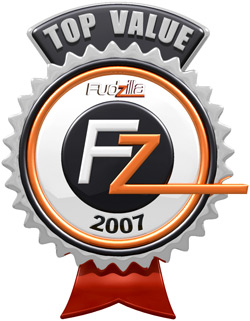Testiranje
For testing this CPU we used: SuperPi, Cinebench R10, Sisoft Sandra Lite XII, Gordian Knot and LameMT.
LameMT
We used the popular LameMT encoder for our MP3-testing, although we don't usually recommend using MP3 for encoding because AC3 can do a better job.
We used the built-in play/CPU ratio; this means the CPU is encoding x-times faster then the track-length. Fast memory does not play an important role here. For your convenience we also show you the single-threaded benches. They will be produced with any other L.A.M.E. version, because only LameMT can do more than one thread and take advantage of a second dice.
We used this setting: lamemt --vbr-new -q 2 -V 2 -m j --strictly-enforce-ISO --resample 48

As you can see from the tables, E2160 is faster, but bear in mind that although the FSB frequency is the same, the CPU multiplier is different. This results in different frequencies, for instance: if you set the FSB to 266MHz, Celeron's x8 multiplier will result in 2130MHz (266 x 8). E2160's multiplier is 9, so the same FSB will result in 2400MHz.
Gordian Knot / Xvid 1.1.3
For our Gordian Knot testing we took a PAL episode from "Babylon 5" with a length of 41 minutes, 57 seconds and 8 frames.
We tried to "emulate" the most common usage of Gordian Knot:
1st: We have a perfect master, so we only de-interlace the content and resize it without any other manipulations; we marked this as "fast."
2nd: You get bad mastering on many DVDs, especially "old" stuff or when the studios are in a hurry for the release. In this case you want to improve the picture quality, which is done by filtering the content. You can choose from lots of filters for any purposes you can think of, but we only used the most common "undot," "FluxSmooth" and "MSharpen." Of course, we also de-interlaced, filters were done before any resizing took place (which is slower). We marked this as "slow."

Here, too, the E2160 comes out on top, but whenever there’s overclocking in the game, it's E2160’s higher multiplier that wins the game.
Super PI
For SuperPI testing we used 1M and 8M calculations. The results were as follows:

Although weakened, this CPU still scored well.
Cinebech R10
Cinebench is a free processor testing benchmark. We used it to test our processor’s performance in 3D applications, meaning 3D content rendering. The results are as follows:

Overclocking
This processor’s main strength is its overclocking capability. Our test sample reached maximum 3100MHz with default voltage, quite an impressive result. With E1200 you get an overclocked CPU running at the same temperatures as it would when using default settings.
However, at stock voltages and under load, Windows crashes and the machine resets. We solved this problem by increasing the voltage by 0,15V. The temperature did not change significantly. This processor runs great when overclocked; its only downside is the cache memory quantity.
Of course, the overclocking potential of this Celeron won’t be completely utilized on budget machines due to limitations other components impose (mainly motherboards). Still, that’s not a big problem because this CPU can handle most applications even at stock speeds.
Conclusion
Since this is one of the lowest priced CPUs around, it definitely blew us away. It showed that it can handle anything that an average user might throw at it. This CPU is more than enough for any office or home “Internet” rig. Gaming shouldn’t be a problem, either, as long as you have an adequate graphics card.
Due to its price, we can recommend it to anyone on a budget, and this is an office machine’s dream come true. Since this DualCore Celeron proved that it can even put up a fight against our lab E2160 sample, it made us ask ourselves whether E2160 is still Intel’s “best buy.”
A processor that overclocks to almost twice the stock frequency is not something you see every day, and E1200 did exactly that. We overclocked it from 1.6GHz to a high of 3.1GHz with ease, which is almost double the stock speed.
All in all, The Celeron E1200, just like E2xxx series that came before it, excels in performance, low price and overclocking potential, and as such it fully deserves our Top Value award.

